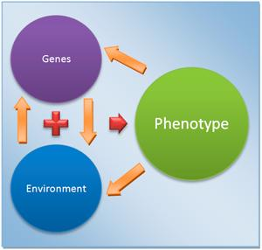When a gaming psychologist gets bored. This can happen...
!! All pictures can be found on google.com
Introduction
1. Killing sprees, video games and the media

Killing sprees committed by pupils and young adults or adults are always tragic, leaving the survivors, the families and many others wondering why it happened. Well known examples for such incidents are the Columbine High School Massacre in Littleton, Colorado (1999), the killing spree of a pupil in Winnenden, Germany (2009) and the killing spree in Emsdetten, Germany (2006). There are many more incidents like these.
Every incident was investigated by the police and other agencies, appointed responsible for finding an answer. But not only the official agencies are looking for answers. The media reporters are also trying to come up with answers to make the story more interesting. Often the first reasons for the actions of the offenders given are music, films and video games. Some of those reasons are discussed long after the incident happened. Like the incidents that have happened in Germany. Bernd Graff (2012) wrote an article for the Sueddeutsche Zeitung about several incidents and looked into the question if violent video games really turned the offenders into killers. Official investigations are citied, which acknowledged that the offenders have been consuming video games and films with violent content, above what was decided to be normal by the investigators. In 2001 an article by Mark Ward in the BBC News reported about the reaction of victim families of the Columbine High School Massacre to the possible involvement of violent video game. The families sued the computer game makers.
The discussion, whether video games are responsible or not still goes on. Often with the help of research, as can be seen in an article by Sadigh in 2008 for Zeit online. In the article it is reported that psychologists from Potsdam conducted several studies that support the reasoning that violent video games can be blamed for aggressive behaviour and the results. As consuming video games with violent content supports aggressive behaviour, emotions and thoughts. Others argued that the video games are only one factor among many. In 2009 Freia Peters wrote an article that discussed that the behaviour shown during the events of the killing sprees cannot be learned by playing violent video games like Counterstrike.
These discussions and events were the reason for this study as they all focus on violent video games, but ignore the possibility that non violent video games could also influence the aggressive behaviour, emotions and cognition. This makes it important to understand what is meant by violence, violent and non-violent video games and aggression.
2. Definitions
Aggression

Aggression, related to humans, is any behaviour towards another with the immediate intention to cause harm. Also the actor must believe that his action will harm the being targeted, and consider that the target will try to avoid harm (Geen, 2001; Bushman & Anderson, 2001).
Harm caused by accident is not aggressive in nature, because the intent is missing. Harm that is caused by a helping another is also not aggressive, as the actor does not belief that the target is motivated to avoid the action. For example a surgical procedure. The same applies to certain sexual practices like sexual masochism, because the receiving target is not avoiding the harmful action as it is connected to goal and purpose (Baumeister, 1989).
Violence
Violence is always aggression, but not all aggression is violence. As violence has extreme harm as goal, like mutilation or death. For example sports, tackling a player of the other team in ice hockey can be seen as an aggressive act, but it is not violent act.
Hostile and Instrumental Aggression
Looking at the research of Geen (2001) and Berkowitz (1993), hostile aggression is viewed as unplanned and impulsive action that is pushed forward by anger felt because of a perceived provocation. The ultimate goal of hostile aggression is to harm the target. Instrumental aggression defined as a means to achieve a goal other than harming the target. Related to the topic of video games and killing sprees the question can be modified to whether the actions of the offenders are hostile or instrumental in aggression.
Video Games
Video games are played on a computer or gaming device connected to a television set. Those games are part of the entertainment and learning environment of children and adults. The video games cover as many topics and genres as films. But unlike films the video games are interactive and create stronger connection between player and world they play in, as the player directly controls the action of the character under the players control. Actions and decisions of the characters in video games often include questions and decisions on moral, ethics and aggression or violence. There are also games that do not include intended or targeted aggression as main content. But most of these aggression free games still have competitive elements that could lead to a change in the aggressive cognition of a player. One of these non-violent games will be part of this study.
With an understanding what aggression is. The next question to understand the topic, problems and finally the research question is, what causes aggressive behaviour, emotions and cognition in humans.
3. Biological Theories on Aggression
Role of Genes

In 1975 Hutchings and Mednick presented research, with a sample of 14000 adoptions, that supported the idea that humans might have a predisposition towards aggressive behaviour through the genes. The stronger the predisposition the more like humans are to act aggressive and it also implied that if one parent is aggressive in its behaviour so will be the offspring of the parent. A problem of the study was that the sample could be considered biased as the result cannot be generalised. As the sample population only included criminals.
But considering the idea of a genetic predisposition it would mean that video games, films and music with violent content would not change the human aggressive potential or cognition as it is determined by the genes.
Gene Environment Interaction Theory
Another biological explanation for aggression and aggressive behaviour is the gene environment interaction theory. The theory suggests that in order to display aggressive behaviour the genetics and the environmental stressors must be present.
Caspi et al. (2002) supported this explanation of aggressive behaviour with a study that included 1037 male participants born in 1972. The study went on for 26 years. During the time of the study the genetic makeup of the children was analysed and the upbringing of the children, noting any form of maltreatment. After those 26 years the participants anti-social behaviour was measured and the result showed that males with high genetic predisposition to aggression and maltreatment were more likely to show anti-social behaviour. The main weakness of the study was that Caspi et al only focused on one gene. Thereby ignoring possible interactions with other genes.
This theory could mean that violent video games, films and music could present an environmental factor or trigger to nurture the aggressive predisposition till the offender needs a vent to act.

!As always. Errors in spelling etc. are possible as English is not my native language.!
Part 2 will be online next Sunday.